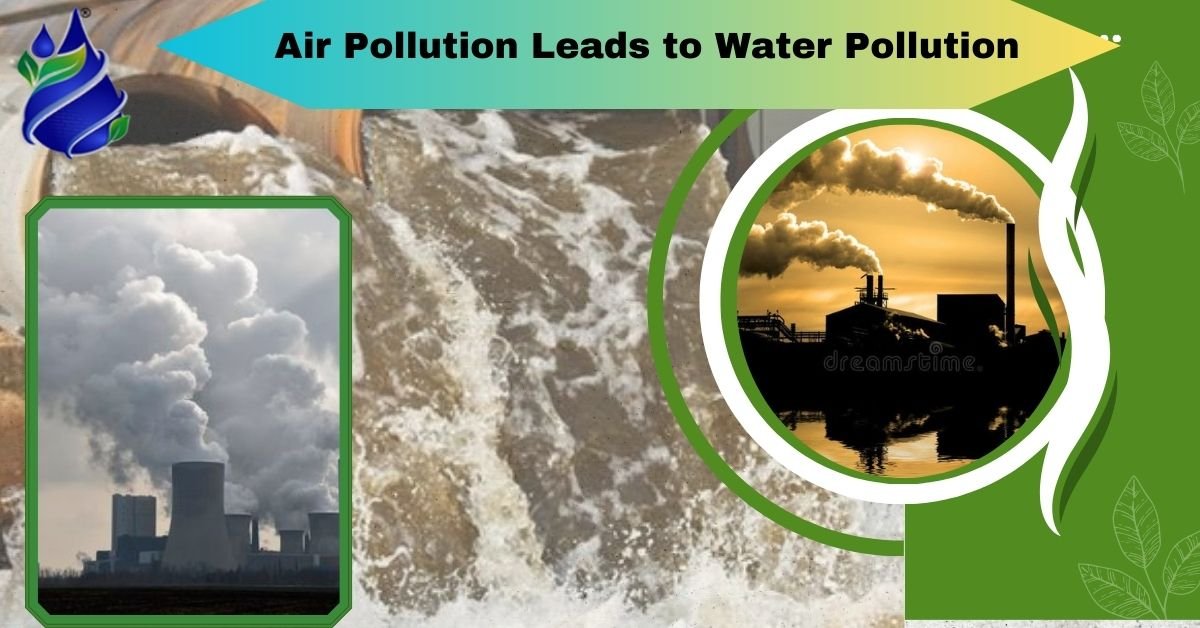
Understanding the Connection Between Air and Water Pollution
Some of the greatest polluters of air are at the same time the greatest polluters of water. Some of the pollutants that are emitted to the atmosphere lead to the deposition on land or water. Such pollutants include chemical, heavy metals and particulate matter. When they infiltrate water sources they pollute the quality of both rivers, lakes and oceans. On the same note, there are gaseous pollutants which are responsible for the development of acid rain.
This in turn influences self-reformation which in turn makes the air and water influence each other in cyclic manner. Pollution increases, water bodies are further affected and lives in water deemed unfit to sustain living beings. By realizing such inherent relation, it is possible to promote interventions that would help cut pollution in both media.
The Chemical Reactions Linking Air and Water Pollution
Chemical processes in the atmosphere cause air pollution to be interrelated with water pollution. Some of the pollutants include sulphur dioxide and nitrogen oxides which react with water vapour. These reactions produce sulfuric acid and nitric acid which during the occurrence of rain fall, are precipitated as acid rain. This is occurring when acid rain falls in water sources hence altering the water’s properties making it acidic.
It is damaging on water ecosystems and alters the chemical quality of the water of lakes and rivers. Also, gaseous contaminants or aerosols constitute various elements, and they may produce dangerous products. They dissolve into our water sources and also add to other pollutants that pollute water. That means reducing air pollution can prevent such chemical reactions from taking place in the first place.
The Role of Airborne Pollutants in Contaminating Water Sources
- Suspended particulate materials float in the air for long distances before they deposit on water surface. These contaminants include nitrogen oxides, sulphur dioxide and particulate matter. Commonly they are induced by car exhausts, industries and farming.
- When these pollutants precipitate over the rivers and lakes they dissolve into the water and become damaging, to the water. For instance, nitrogen compounds lead to over growth of algae that reduce the oxygen levels in the water. This operation leads to blanketing of water bodies and annihilates lives within these bodies of water as well as their supporting ecosystems.
- Companies contribute to polluting the world by physically changing airborne pollutants into water. Proper regulation can prevent this adverse interaction. Acid rain results from the emission of pollutants that include, Sulphur dioxide and nitrogen oxides into the atmosphere.
- They make sulfuric as well as nitric acids that drop as rain. Acid rain affects water bodies by causing the pH level in lakes, rivers and streams reducing. The water becoming acidic has adverse effects on fish and other organisms found in aquatic bodies.
- The is because many species cannot withstand such conditions and this kills diversity in forms of life. It also increases the toxicity of metals such as aluminium in water. These toxic metals in effect added the other dangers to water quality and therefore human and animal health.
The Impact of Industrial Emissions on Water Bodies
Companies discharge immense quantities of effluents into the atmosphere on daily basis. Some of these pollutants include; Chemicals, heavy metals and Green House Gases. It is here that after flying they alight on water zones such as rivers, lakes, and the seas. Emission of gases from industries-polluted water bodies, changing their ph level as well as increasing the level of toxicity. This is not only a problem for water in rivers, lakes and seas, but also for the quality of the drinking water. Communities situated in or around industrial zones have a higher chance of water contamination. They can cut down the emission to our water body to a large extent hence safeguarding both natural and man’s health.
Air Pollution and Its Downstream Effects on Marine Ecosystems
Air pollution affects the marine environment in numerous ways. Pollutants can escape into the air and descend onto oceans and coastal waters. Pollutants such as mercury, nitrogen oxides, and other poisons enter the aquatic environment. It also has an impact in the health status of fish, the coral reefs, and the marine plants. This is exemplified by eutrophication which is as a result of high concentrations of nitrogen in water bodies triggering bad algal blooms.
These blooms have the capacity to decrease the concentration of dissolved oxygen in the water hence resulting in established dead zones which cannot support sea life. The concept of sustainable utilization of marine ecosystem means that one of the avenues of putting it into practice is the elimination of air pollution at its source. This issue helps in fixing the problem of our seas and also the creatures that dwell in it.
Conclusion
Finally, pollutants in the air can lead to water pollution as they transfer from the air to water sources. Some of the pollutants common to water bodies include nitrogen oxides, sulphur dioxide and heavy metals hence affecting aquatic life. Air pollution leads to formation of acid rains, which in turn worsens with water quality by causing chemical changes that increases the level of acidity as well as toxic metal. Industrial emissions and automobile exhaust also land dangerous materials in rivers, lakes, and oceans as well. This constant pollution kills the lives in the water, reduces the stocks of fish and other species and affects social units that depend on clean water. Through control of air pollution, there is control of effects which may have a lot of impact on water resources, thus preserving the environment and health of the people.


